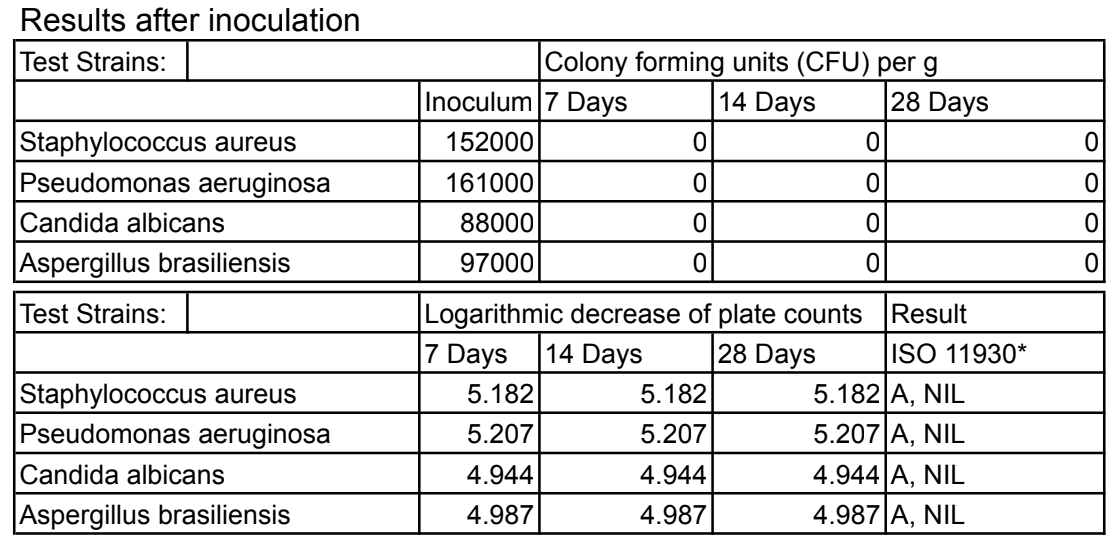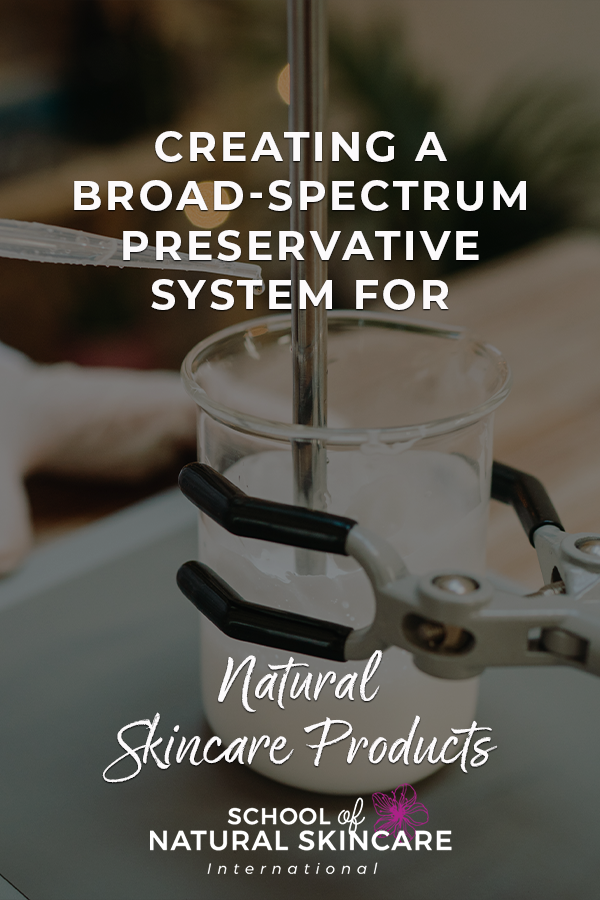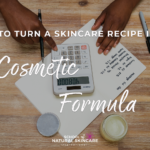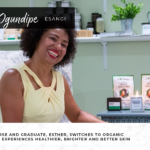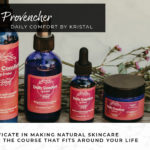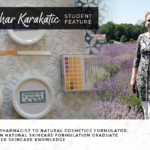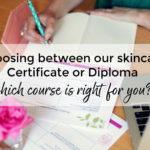Without a doubt the questions we get asked the most are about natural preservatives for cosmetics!
There are several useful blog posts on our website that cover the basics: Do You Need to Use Preservatives in Homemade Natural Skincare Products? and 3 Natural Preservatives for Cosmetics.
Here, we want to go a little deeper and talk about creating a broad-spectrum preservative system. This means combining preservatives (and chelators) to create a robust preservative system that will pass a Preservative Efficacy Test.
Broad-spectrum preservation
In order to effectively preserve a cosmetic product, broad-spectrum coverage is required. This means the preservative is effective against:
- gram positive bacteria
- gram negative bacteria
- mold
- yeast
Each of these pose a threat to your natural cosmetic products and therefore your preservative system needs to provide adequate protection against them all.
Without adequate protection your natural skincare products can spoil and potentially cause skin irritation/infection.
Infected products that are applied to the skin can cause anything from minor irritation to serious skin or systemic infections.
Several natural broad-spectrum preservative blends are available. These are commercial preservative blends that contain a number of different ingredients that work in synergy to provide broad-spectrum coverage.
Natural broad-spectrum examples include:
- Geogard Ultra (INCI: Gluconolactone (and) Sodium Benzoate).
- Geogard 221 (INCI: Dehydroacetic Acid (and) Benzyl Alcohol).
- Preservative ECO/Geogard ECT/Plantaserv M (INCI: Benzyl Alcohol (and) Salicylic Acid (and) Glycerin (and) Sorbic Acid).
These ready-to-use blends are the easiest and most convenient option for home formulators, but they aren’t always enough.
When is a commercial preservative blend not enough?
The preservative blends we have mentioned above may be effective enough on their own. Often manufacturers of preservative blends state that they are broad-spectrum and in some cases they really can provide broad-spectrum coverage.
But they have likely tested ideal formulas in ideal scenarios, rather than taking into account all eventualities and possibilities.
To make a preservative system more robust, to preserve a more challenging formula or to give your formula the best chance of passing a Preservative Efficacy Test (PET, also known as a challenge test) you can combine it with other ingredients to create a truly broad-spectrum preservative system.
If your intention is to sell cosmetics then YOU are responsible for ensuring that they are safe for consumers.
In some regions (like the UK and Europe) it is a requirement for products that contain water (like creams and lotions) to pass a PET or challenge test. In other countries it is highly recommended as it is the only way to know for certain that your preservative is working effectively enough.
How to create a broad-spectrum preservative system
When you want to create products to sell, you need to submit a product for a challenge test. If you fail to submit your product you risk having a formula that isn’t adequately protected with a ready-to-use preservative blend. What you need is to learn how to create your own broad-spectrum preservative system.
The diagram below is our suggestion for how you can create a broad-spectrum preservative system.
This requires an understanding of what can be used as a secondary preservative/preservative booster and natural choices for chelating options, which we explore in detail in the Diploma in Natural Skincare Formulation.
You can see an example of how we have created a broad-spectrum preservative system in our skincare formula for a Floral Moisturizing Fluid.
In this formula we created a broad-spectrum preservative system using Geogard 221 (INCI: Dehydroacetic Acid, Benzyl Alcohol) as our primarily preservative blend. We added potassium sorbate as our secondary preservative/preservative booster. We have also used Dermofeel PA-3 (INCI: Sodium Phytate (and) Aqua (and) Alcohol) as our chelating agent.
We submitted the Floral Moisturizing Fluid for preservative efficacy testing and it passed this rigorous laboratory test, meaning the product is protected against microbial proliferation that may present a potential risk for the user.
Testing preservative efficacy in skincare
A Preservative Efficacy Test (PET) also known as a challenge test is the ONLY way to know that your preservative blend is working. There is no way of getting around this.
A blend that works in one formula won’t necessarily be effective in another formula!
In this test a product sample is contaminated with gram positive bacteria, gram negative bacteria, yeast and mold to see how effective the preservative system is.
By learning professional formulation skills and understanding more about preservatives, chelating agents and creating preservative blends you’ll give your products the best chance of passing a PET. That’s why we include detailed information about these topics in our Diploma in Natural Skincare Formulation.
Laboratory test reports for formulations included in our Diploma course
It isn’t enough to show you how to effectively preserve your natural skincare products. We take it one step further and share with you real laboratory test reports for the formulas that are provided in the course.
Here is a summary of the results for the Floral Moisturizing Fluid.
By joining the course you’ll learn how to interpret reports like this and see plenty of proven examples of product formulations that have passed challenge testing because of correctly formulated broad-spectrum preservatives.
Preserving your natural skincare products is an advanced topic and one we cover in-depth on our Diploma in Natural Skincare Formulation. It is such an important topic that we have a whole Module dedicated to preservation: Module 7 Preserving Skincare Products Naturally.
The Diploma in Natural Skincare Formulation is the most comprehensive online natural skincare course available. It’s the only course you need to create your own natural skincare brand.
On this multimedia accredited online course, you’ll learn the practice, art and science of natural skincare formulation from start to finish. You’ll begin the process of designing the idea around your brand (if that’s what you want to do) before you create the ideas and vision for your natural skincare products.
We’ll help you design everything on paper first, and walk you through the formulation and practical experimentation process.
You’ll also learn how to formulate your own natural skincare products for a specific purpose, target audience, skin type or skin concern and we’ll help you ensure your products are a match to your value system! Vegan, organic, natural, sustainable, ethical, fairtrade, package free…
We’ve got you covered!
If you want to create a range of natural and organic skincare products that are a cut above the rest, you will need to be able to deliberately select the right ingredients to get the result you seek, organise them in the right percentages to give you the consistency, viscosity and quality you want, and know how to ensure your masterpieces are safe, stable and effective.
That is what studying the Diploma in Natural Skincare Formulation will help you to do – and more!
To get you started with formulating your own natural skincare products, you can always have a look at our amazing Beginner’s Guide to Formulating Natural Skincare Products. It won’t teach you everything you need to know, but it will get you up and running!
The beginner’s guide to formulating natural skincare products (from scratch, like a professional)!
The essential foundation you need to help you start creating your own natural skincare products from scratch rather than simply following recipes!
Download this fabulous guide and you’ll learn:
- What formulating is and why you need to be doing it!
- The difference between following recipes and formulating your own products.
- How to formulate like a pro! Seven top tips for becoming a confident skincare formulator.
- Our step-by-step process to designing products people love.
- Four easy ways to personalize your skincare products.
- Choosing the right carrier oils for your beauty products.
PLUS: TWO FREE WORKSHEETS!
- Our Cheatsheet Download: How professionals design skincare products (taken from our Diploma in Natural Skincare Formulation).
- Our Safe Product Checklist: How to make sure the skincare products you create are safe and stable.
Loved learning about broad-sprectum preservative systems? Make sure to remember by pinning this post!



